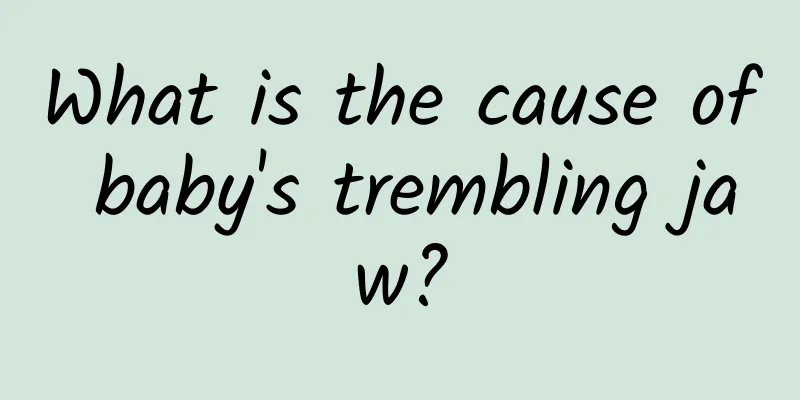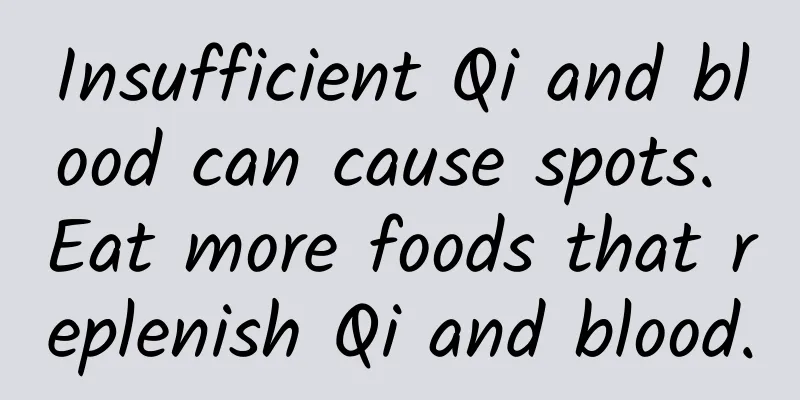What is the cause of baby's trembling jaw?

|
Frequent shaking of the baby's chin is generally caused by local tics in children. The cause of this symptom has not been fully understood yet. However, the child's mental factors or imitative psychology may cause the child to behave in this way. To alleviate this symptom, you can use psychological behavioral therapy, behavior correction, and drug therapy. Below we will introduce in detail the causes and treatments of local tics in children! 1. Pathological causes
The causes of tics in children are not yet fully understood. It is believed that children with special qualities are prone to develop abnormal motor conditioned reflexes when they have various mental factors or imitate the actions of others. 2. Psychological behavioral therapy (1) Eliminate the cause: In children with transient tic disorders, especially those whose tics do not last long, it is often not difficult to find the cause during the behavioral interview. Triggers for young children are usually watching intense television or video programs, playing video games, or hearing or seeing frightening things. Therefore, it is crucial to find the trigger and eliminate it, which is also the treatment of tics from the root. (2) Detailed analysis of psychological factors: The psychological factors of the child before the onset of the disease should be analyzed in detail to identify possible causes of the disease and then resolve them. Older children often develop tics due to accidents, family conflicts, or excessive academic pressure. For example, the adjustment of various contradictions, family conflicts, and the mental conflicts and tensions caused by excessive demands and coercion of parents and grandparents on children must be resolved. If there are school factors, you should contact the teacher to jointly resolve the issue. For factors that cannot be resolved, supportive psychotherapy should be given to help children analyze the mental causes and find the correct way to deal with them. (3) Provide necessary guidance to parents: Explain the nature of the disease to the parents of the child and tell them not to panic. This can eliminate the reinforcement effect caused by the parents' excessive attention. Parents are often overly worried about tics. They should be made to understand the causes of tics and arrange their children's life, study and activities reasonably. Do not remind the child of his or her tic symptoms. Blaming and paying excessive attention to the child will make him more nervous, which is not conducive to controlling the tics. Instead, the child's tics should be ignored, which can gradually relieve the symptoms. In most patients, symptoms will disappear naturally after a few months. Help children eliminate inducements and provide a good and relaxed family environment. 3. Behavior Correction Encourage children to control tics on their own, use positive reinforcement methods such as rewarding them for their efforts to overcome and reduce tics, and use relaxation methods to reduce children's mental stress. This is more effective for young children. IV. Drug Treatment Tics generally do not require medication. They are only given when the tics significantly affect the child's movement and speech, and interfere with interpersonal relationships and classroom learning. (1) Eliminate the causes: Tonsillitis, allergic conjunctivitis, rhinitis, upper respiratory tract infection, etc. are sometimes the causes of tics in children. Therefore, these diseases should be treated first. (2) Haloperidol (HAL): can block dopamine receptors. The dosage is 0.02-0.05 mg/(kg·d), starting with a small amount orally, 0.25 mg, twice a day. If it is ineffective, gradually increase the dosage until a satisfactory effect is achieved, so that the symptoms are controlled without side effects. Children can take up to 1 to 6 mg/d. This drug is prone to cause extrapyramidal side effects, among which acute dystonia and akathisia are the most common. Large doses can also cause myocardial damage. To prevent extrapyramidal side effects, scopolamine or antan can be used in combination. (3) Diazepam (Valium) (1.25-2.5 mg, twice a day) or chlordiazepoxide (2.5-5 mg, twice a day) (2.5-5 mg, twice a day) can be added to children with severe anxiety. |
<<: Symptoms of liver yin deficiency
Recommend
How long does it take to drink Chinese medicine?
Everyone knows that Chinese medicine is important...
What are the functions and benefits of Yongquan foot patch?
The feet are a sensitive part of the body. Althou...
Can I use ice packs for facial allergies?
The face is also a part of the human body that is...
What medicine can repair gastric mucosa?
If the gastric mucosa is damaged and stomach prob...
What to do if your hands hurt from using too much force
If you use too much force in your daily life, it ...
I feel uncomfortable in my stomach after eating cold food
The properties of food can be divided into cool, ...
How to treat cystic anal fistula? Teach you the correct treatment method
Once the disease of cystic anal fistula occurs in...
Can I eat instant noodles if I have high blood sugar?
People nowadays often suffer from symptoms of hig...
How to deal with large blisters caused by burns
If you are burned by hot oil, blisters will easil...
Xiao Cheng Qi Tang recipe
In China's traditional history, Chinese medic...
What are girls who love biting their lips thinking about?
In life, we always see many girls who love to bit...
What causes anemia?
If you have anemia, you must pay attention to act...
Red spots on tongue
With the increasing pressure from work and life, ...
What causes hand tremors in teenagers?
In everyone’s impression, hand tremors are exclus...
How to deal with tooth decay pain? Eight folk remedies to relieve toothache
As the saying goes: toothache is not a disease, b...









